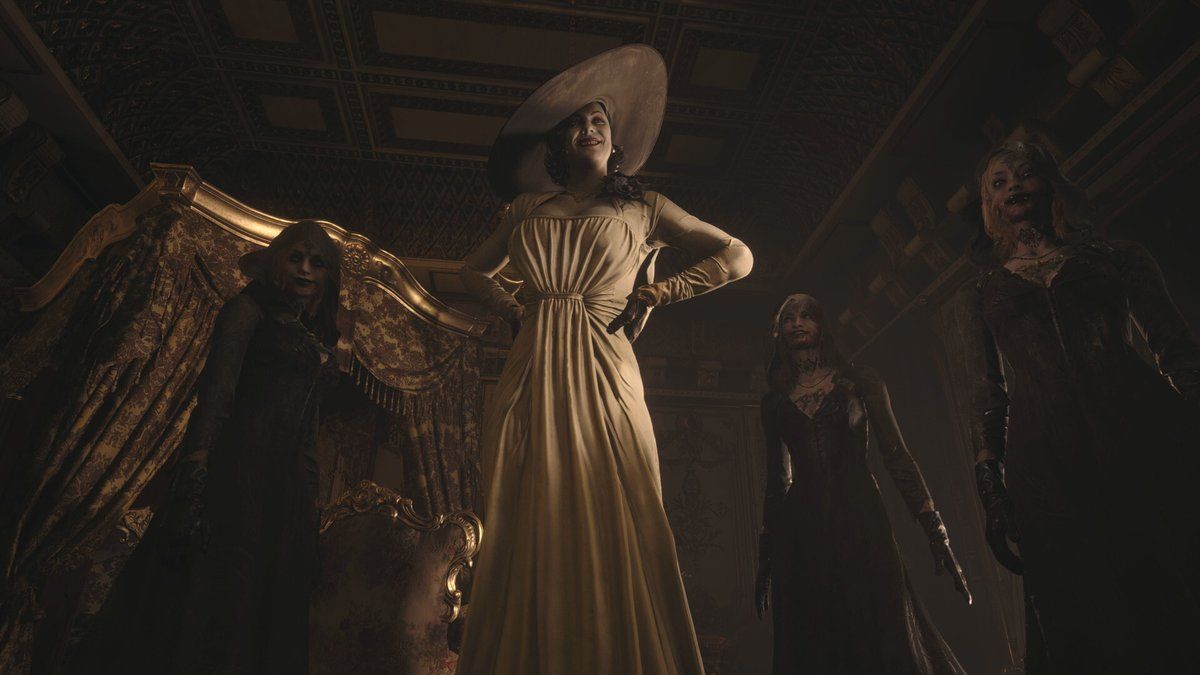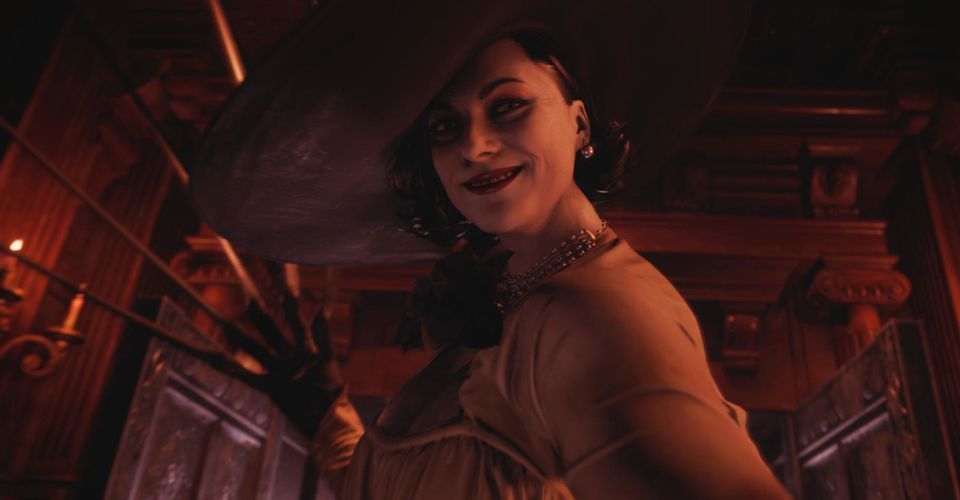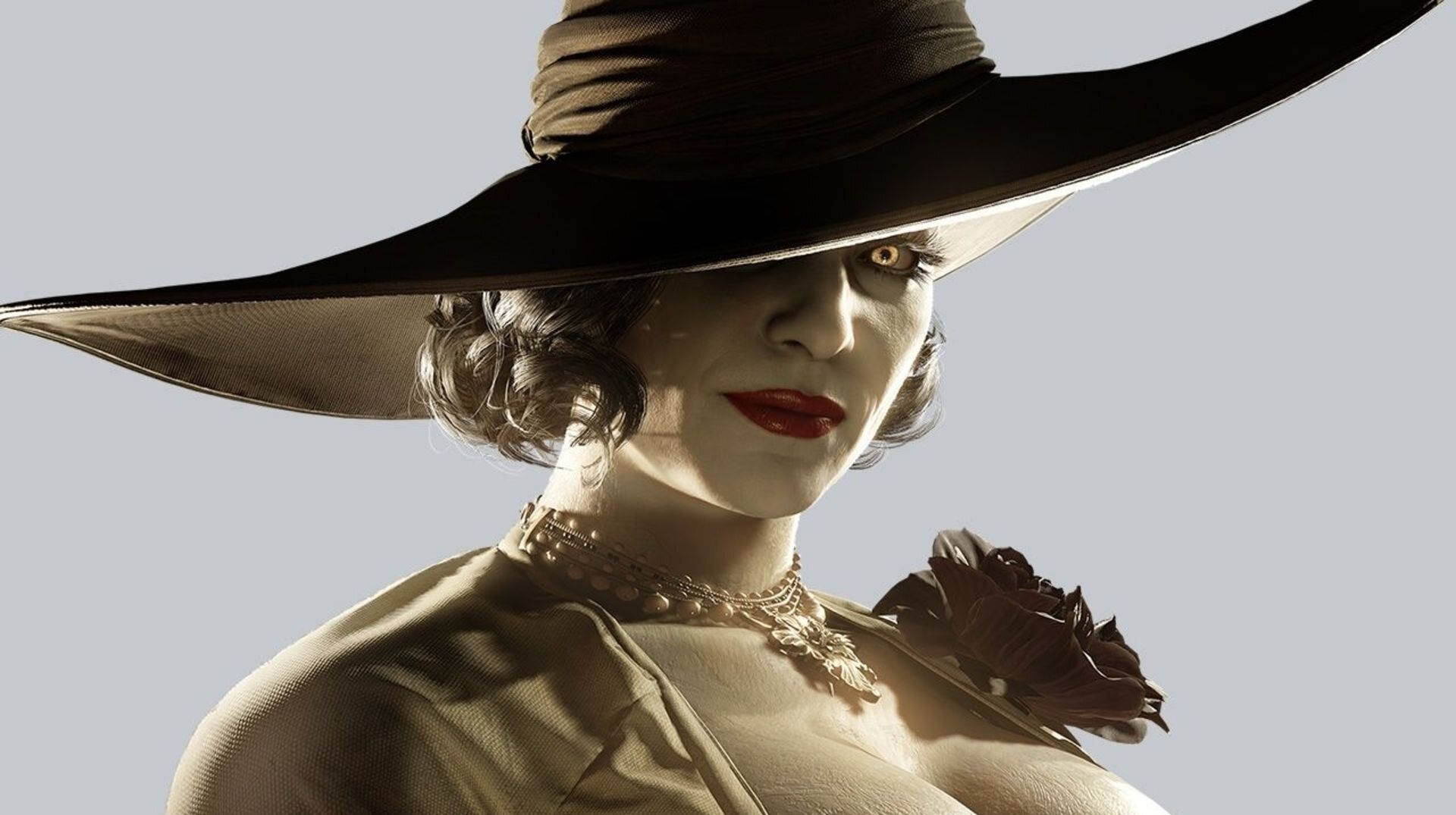Resident Evil Village’s tall vampire lady has caused the internet at large to go completely feral. This is understandable: she is an eight-foot-tall vampire lady.
I think the last week of hornyposting is a bit more complex, though. Vampires have been hot for well over 100 years. Not all of them were giantesses with cartwheel hats, mind, but the idea of a vampire being attractive stems from the late 19th Century – and I’m not just talking about Bram Stoker’s Dracula.
First, let’s have a little look at vampires in other games. Castlevania’s Alucard looks like what we’d show aliens if we only had one opportunity to prove that humans can be good-looking. Regis from The Witcher 3’s mutton chops aren’t exactly chic, but he has an air of elegance and refinement about him that gives him a bit of a Clive Owen aura. Nexus Mods has seven entire pages of Serana mods for Skyrim, and that’s only including ones that are directly named after her. It seems people weren’t very happy about not being able to marry Skyrim’s ordinary-height vampire lady.
Speaking of being named after something, I’d like to draw your attention back to Castlevania. Not only does the animated series feature a version of Dracula that looks like the result of AI tirelessly scraping together designs for “hot person who will almost definitely kill you” – it quite literally includes Carmilla, one of vampire literature’s most prominent and influential characters.
While Dracula may have established the Hot Vampire as we know it today, Sheridan le Fanu – another Irish author – published Carmilla 26 years before it. This is a much shorter book, mind, and its narrative is far more constrained than the sprawling, epistolary endeavors of Stoker. Still, le Fanu – and Carmilla, in terms of both the book and character – tell us a lot about why vampires often pertain to ideas of sensuality, to the extent that their emergence in Victorian Gothic literature quickly became a mode of specifically expressing sensuality in a society where it was taboo.
To make my point a bit clearer, here’s a passage from chapter four of Carmilla, in which Laura, the teenage protagonist, muses about her new “friend”:
“Sometimes after an hour of apathy, my strange and beautiful companion would take my hand and hold it with a fond pressure, renewed again and again; blushing softly, gazing in my face with languid and burning eyes, and breathing so fast that her dress rose and fell with the tumultuous respiration. It was like the ardour of a lover; it embarrassed me; it was hateful and yet overpowering; and with gloating eyes she drew me to her, and her hot lips travelled along my cheek in kisses; and she would whisper, almost in sobs, ‘You are mine, you shall be mine, and you and I are one for ever.’”
Laura and Carmilla are just pals, mind. This is 1871 and there’s no messing around before marriage. Also both of these young women need to find themselves dashing young men, for whom they will bear children and not speak out of line. What I’m getting at is that, although the above passage isn’t explicit, it’s extremely risqué for the time in which it was published.
To elaborate on that idea even further, allow me to pivot your attention to the end of chapter three in Dracula. This is where Jonathan Harker first comes into contact with the three Brides of Dracula, and basically says, “I know you’re going to kill me, and I am totally OK with that.”
“I was afraid to raise my eyelids, but looked out and saw perfectly under the lashes. The girl went on her knees, and bent over me, simply gloating. There was a deliberate voluptuousness which was both thrilling and repulsive, and as she arched her neck she actually licked her lips like an animal, till I could see in the moonlight the moisture shining on the scarlet lips and on the red tongue as it lapped the white sharp teeth. Lower and lower went her head as the lips went below the range of my mouth and chin and seemed to fasten on my throat. Then she paused, and I could hear the churning sound of her tongue as it licked her teeth and lips, and I could feel the hot breath on my neck. Then the skin of my throat began to tingle as one’s flesh does when the hand that is to tickle it approaches nearer, nearer. I could feel the soft, shivering touch of the lips on the super sensitive skin of my throat, and the hard dents of two sharp teeth, just touching and pausing there. I closed my eyes in languorous ecstasy and waited, waited with beating heart.”
Sounds like Harker’s having himself a nice time, eh? Later in the novel he looks back on this with disgust, noting that his fiancée – the pure and chaste model of Victorian feminine sexual repression – is a real woman, as opposed to these animalistic monsters. “I am alone in the castle with those awful women,” he remarks. “Faugh! Mina is a woman, and there is nought in common. They are devils of the Pit!”
But in the moment, while he is in Transylvania and is untethered to Victorian ideals of sexual regression, Harker seems to intuit the inherent backwardness of the system his values are defined by. When Mina is bitten by Dracula, Harker’s motivations to save her are as much driven by wanting to preserve her chastity as they are to save her life. His greatest fear is seeing his fiancée become like the Brides of Dracula, because the disgust he feels in relation to his encounter with them is directed towards himself.
But there’s more to it than pure attraction. Vampires, like the aristocratic Resident Evil zombie dom, are intrinsically tied to class divides. I’m not sure how familiar you are with Dracula as a whole, but as an Irish person, I’ve got some scorching hot takes about it. It’s a phenomenal book and the bonafide masterwork of vampire literature, but it’s… eh. What can I say? Bram Stoker was a bit of a git.
Stoker was Irish, but he was married to Oscar Wilde’s ex-suitor and worked for Sir Henry Irving as the manager of the very posh Lyceum Theatre. He claimed to support Home Rule in Ireland – then under the thumb of the British Empire – but was staunchly pro-Imperialism. Dracula, however, manages to be both pro-British and anti-Empire.
The entire reason Jonathan Harker goes to Transylvania in Stoker’s novel is to help Dracula buy a big fancy house in England – the world’s most famous vampire is quite literally a bloodsucking landlord. Also, Dracula’s primary purpose for leaving Transylvania in the first place is to find new blood and spread vampirism – sounds a bit like something else, doesn’t it? Need I remind you that Rudyard Kipling published the notoriously jingoistic White Man’s Burden two years after Dracula, proving that, at this time, the British Empire was almost completely unchecked – Ireland would famously march for independence 17 years later in a failed revolt that inspired a sincere one.
Let’s take a quick look at the framework of Dracula’s voyage. He sets sail on a ship called the Demeter – which is also the name of the one that Morinth, Mass Effect’s vampiric Ardat-Yakshi, uses to evade capture – and kills all of the crew. When he arrives, he puts small boxes filled with Transylvanian soil in each of his properties, because vampires can only survive if they rest on earth from their homeland. Enforcing your culture on a nation of unsuspecting innocents while literally supplanting its landmass with non-indigenous objects? Couldn’t be Great Britain. Has to be Transylvania.
It’s worth noting that Dracula is also killed back in Transylvania – foreignness is exterminated on foreign ground here, suggesting the superiority of the British Empire not only on its own soil, but on the soil of any who would attempt to combat it.
And so it’s no wonder that Resident Evil Village’s tall vampire lady is wearing an extravagant dress emblazoned with a stylish rose, or that her voguish combo of pearl necklaces and sleek black gloves resembles the aesthetic of a high-society flapper. Lady Dimitrescu’s fashion sense is of particular intrigue, appearing to combine Renaissance proportions with more modern, 20th Century accessories. I mean, if you were several hundred years old, you could probably stitch together an outfit that combined all of the millennium’s best trends, too.
When you consider all of this, it makes sense to see the literary evolution of the vampire as an exploration of freedom and empowerment, but also as an entity that is inherently associated with the aristocracy. The contemporary structure of vampire fiction seems to largely subvert its origins in several ways, as we have recently seen with Resident Evil Village’s tall vampire lady. When Dracula launched in 1897, married men would call it a decent adventure story in conversation with friends, while exhibiting performative disgust in response to its more carnal sections. In 2021, people see an eight-foot-tall vampire lady and post “kill me mommy” on main. We’ve come a long way, although I still reckon vampires would absolutely do you in over missed rent.
Next: After Three Months Away, Genshin Impact’s Xiao Could Bring Me Back To The Game
- TheGamer Originals
- Skyrim
- Resident Evil
- PC
- Castlevania
- Xbox One
- Ps5
- ps4
- The Witcher 3
- Xbox Series X
- Resident Evil Village
Cian Maher is the Lead Features Editor at TheGamer. He’s also had work published in The Guardian, The Washington Post, The Verge, Vice, Wired, and more. You can find him on Twitter @cianmaher0.
Source: Read Full Article



